Advertisement
Chopping Down Trees For Solar Panels? The Choice Isn't Clear-Cut For Stoughton Church
Resume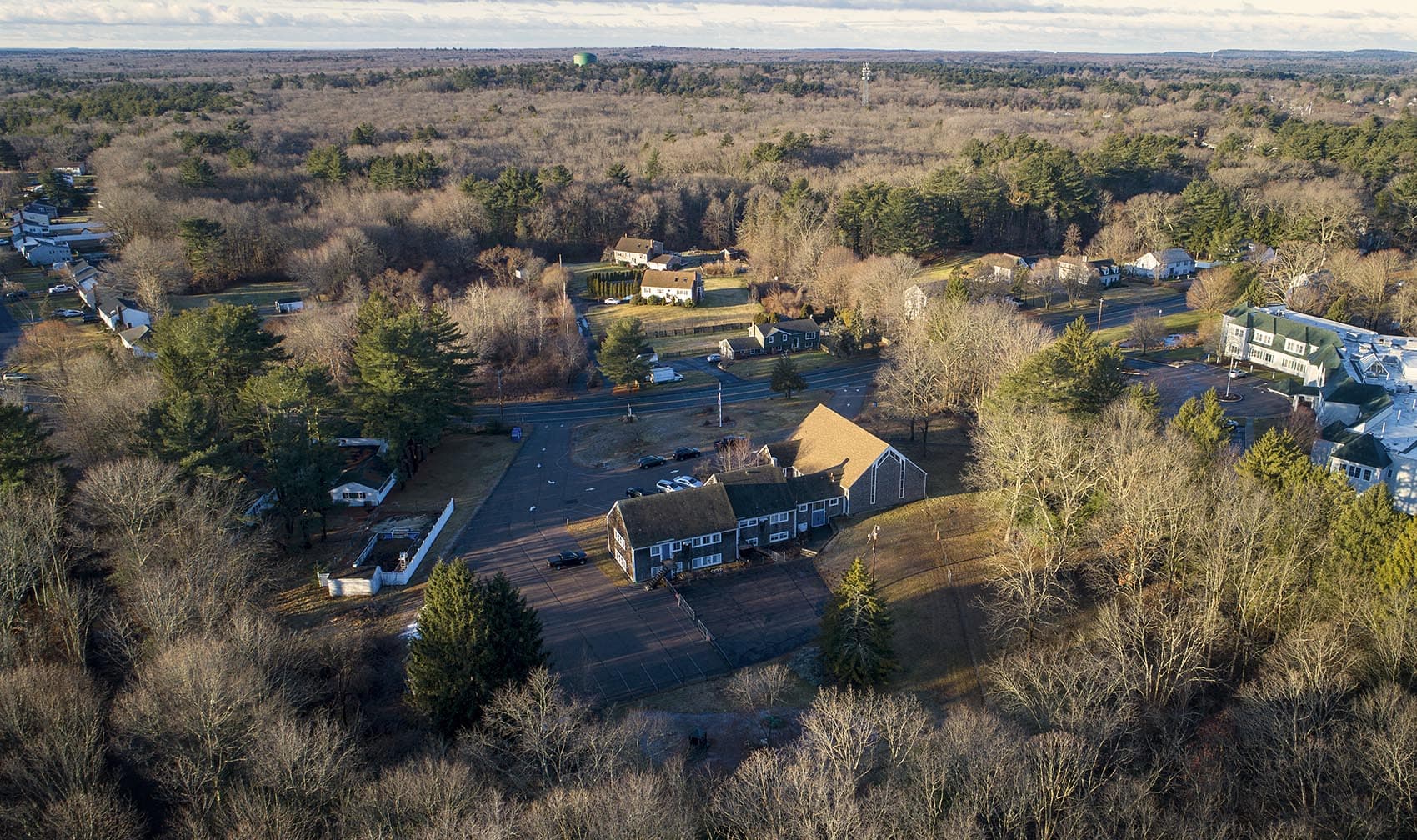
For the congregation of Trinity Episcopal Church in Stoughton, following in Jesus' footsteps means calculating their sanctuary's carbon footprint.
The church is one of a growing number of houses of worship trying to do God's work on Earth and confront the global climate change crisis. Trinity's congregation is struggling with a difficult choice: whether to cut down a small forest behind their church in order to install a carbon-saving solar energy farm.
After much soul searching — and scientific analysis — the Stoughton faithful found that there are no easy answers.
"About four years ago we decided to start down the journey of becoming a sustainable house of worship," said Rev. Harry Walton — everyone calls him Father Harry — who became minister of Trinity Episcopal parish in 2015. "The Episcopal Church is really at the forefront of environmental stewardship and commitment to creation care."
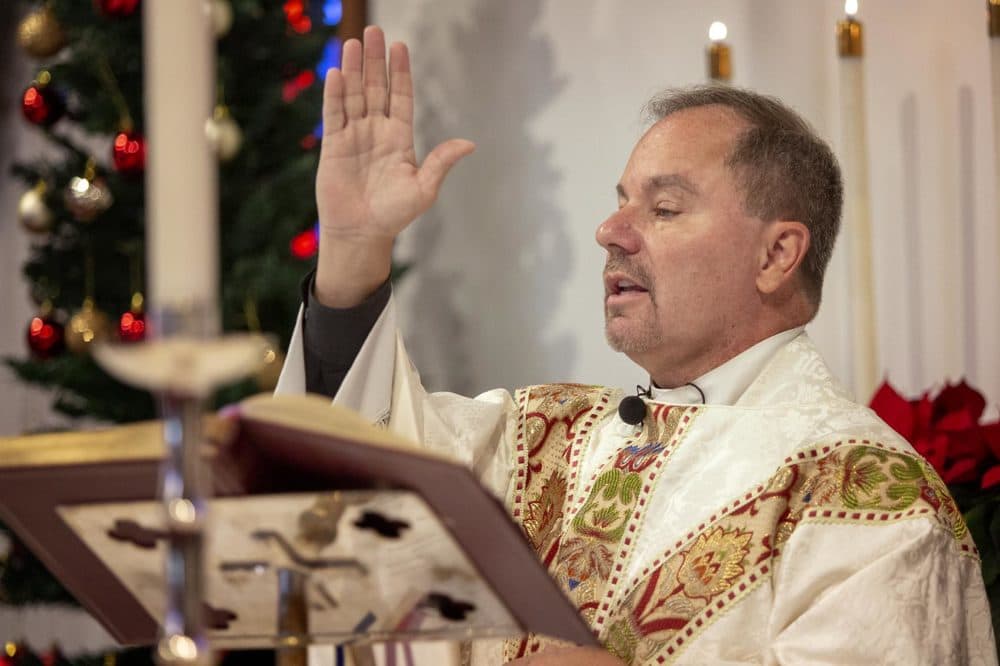
To commemorate the church's 50th anniversary, the congregation installed power-saving LED lights through out the sanctuary building. And thanks to a low interest "green" loan from the diocese, the church replaced its old boiler with a new, high efficiency model. Walton said the money saved on fuel is helping the church pay off the loan in half the time.
Trinity Church is part of a national organization called Interfaith Power and Light, which has chapters in 40 states.
"We're about bringing a faith based response to the climate emergency," said Jim Nail, president of the Massachusetts chapter.
Six years ago, the group helped a dozen houses of worship in Massachusetts go green. Today, 85 churches, synagogues and mosques in the state have taken up the cause. Only California has more members.
"These days we're all united by the climate," said Nail, who preaches the gospel of environmental stewardship by citing Matthew 24:40-45, which describes a Christians' duty to help others. "With the kind of suffering that climate change is causing, those are the people suffering today that we believe Jesus would be calling us to pay attention to, reach out to, and try to address the cause of climate change so we can reduce the damage up front."
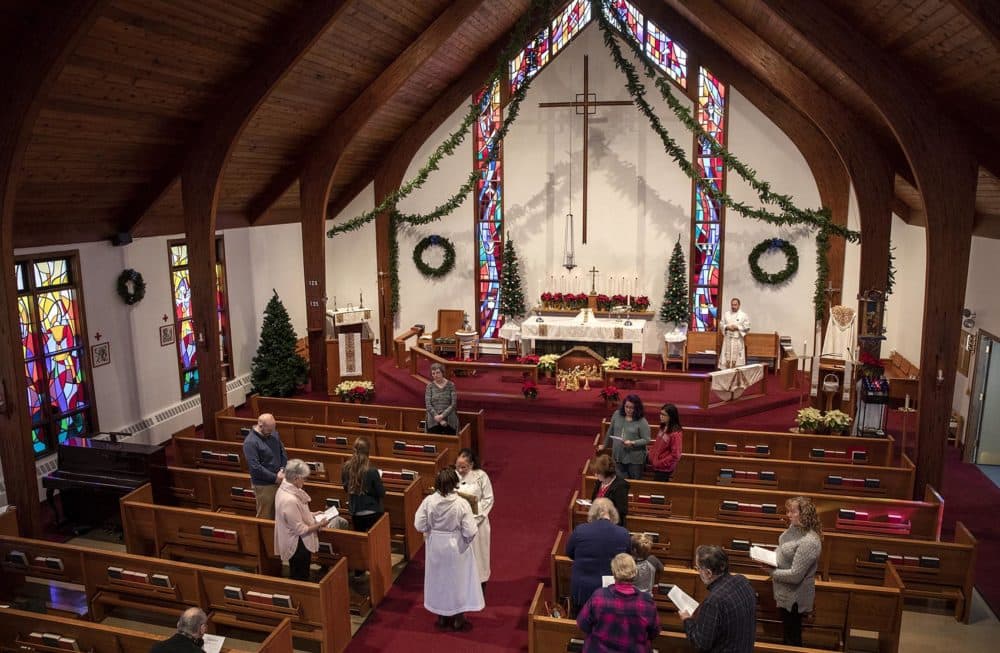
Walton and several of the church's lay leaders took Nail's message to heart. And the message, they said, has led them to consider installing solar panels on a fenced-off copse of pine, oak, maple and hickory trees beyond the church's parking lot and playground.
At one time the church considered clearing the acre-and-a-half of trees to build a religious school, or selling it to a housing developer. But the forest land is soggy and rocky — bad for buildings but maybe good for a solar farm.
Trinity Church asked Brandeis University biologist Eric Olson to calculate the carbon stored in the church's forest.
Olson, with the help of his graduate students, measured the metric tons of carbon dioxide absorbed in the Stoughton church's trees and the soil.
Carbon dioxide is the main greenhouse gas released by burning fossil fuels, and the major cause of global warming and climate disruption.
Temperate forests like those in Massachusetts are the best in the world at storing carbon from the air, socking away twice as much per acre as tropical rain forests. But when Olson and his team calculated replacing Trinity's forest with solar panels, the payoff in carbon was a no-brainer.
"The solar array would pay back the loss of the forest in about two-and-a-half years," Olson said.
But a forest is more than the sum of its stored carbon. Trees cool the air, the roots shield the soil from heavy rain and erosion, and leaves give off life-sustaining oxygen.
"The forest can't defend itself, I'm afraid, on the basis of carbon," Olson said. "But on the other hand, it's a habitat for birds and butterflies. And it's really pretty."
Theoretically, we could generate all the electricity the United States consumes in a year with about 21,000 square miles of solar panels. That's about half the land leased in the United States by the oil and gas industry.
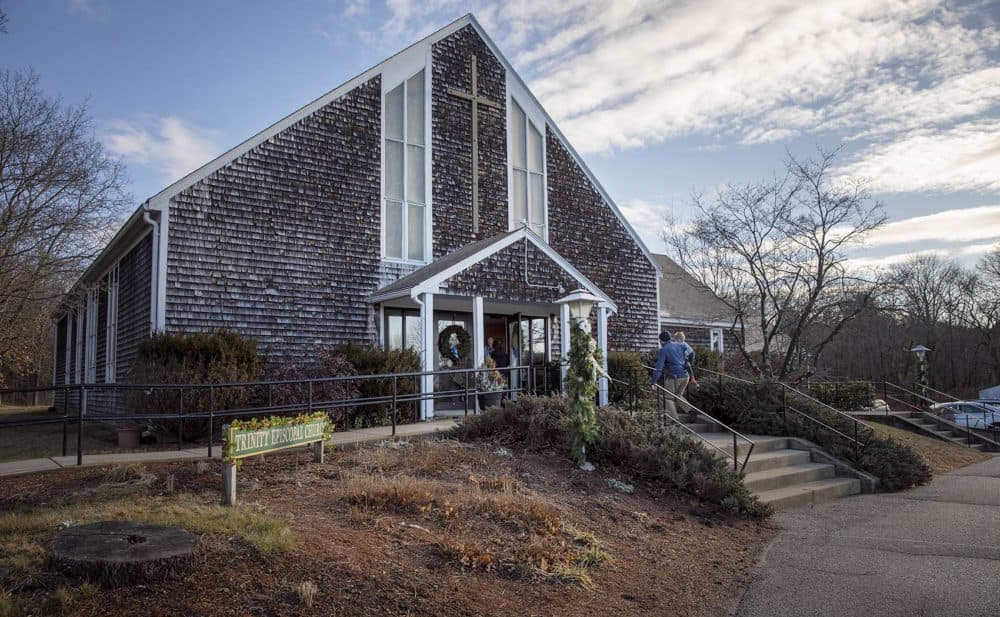
How land will be used in the new energy economy is a critical and controversial question. In a new report, Mass Audubon calculated that almost 25,000 acres of land in Massachusetts — about 13 acres a day — was developed between 2012 and 2017. A quarter of that land was converted to solar arrays. "We must encourage the continued growth of the solar energy sector while emphasizing rooftop and parking lot
canopy systems rather than ground-mounted arrays that degrade
wildlife habitat and other important values of natural land," the report noted.
"Think about electrifying the transportation system and trying to unhook all our buildings from natural gas," Olson said. "I think there's going to be increasing demand for wind and solar, and I think there's going to be some forest cut. And that's going to be a painful, painful decision."
Olson's carbon calculation presented a conundrum for the Stoughton Episcopal church. "As a priest here, the last thing I want to have is something that's divisive to the congregation," says Father Harry. "I want to honor and respect everyone's opinion and find that balance that's the best thing for the community itself."
Replacing the church's forest with solar panels would generate an excess of electricity. The power could be donated to the nursing home next door, or sold to the regional power grid for a profit. Walton said the money could be used to plant trees on deforested land in Central America.
The issue has led to lengthy discussions within the congregation, as parishioners try to balance the value of the forest carbon, their faith and the church's finances.
"It's not not about the money," said Bonnie Hickey, assistant treasurer and lifelong parishioner at Trinity. "Keep the trees. Save the trees and the animals. We've cut down enough trees."
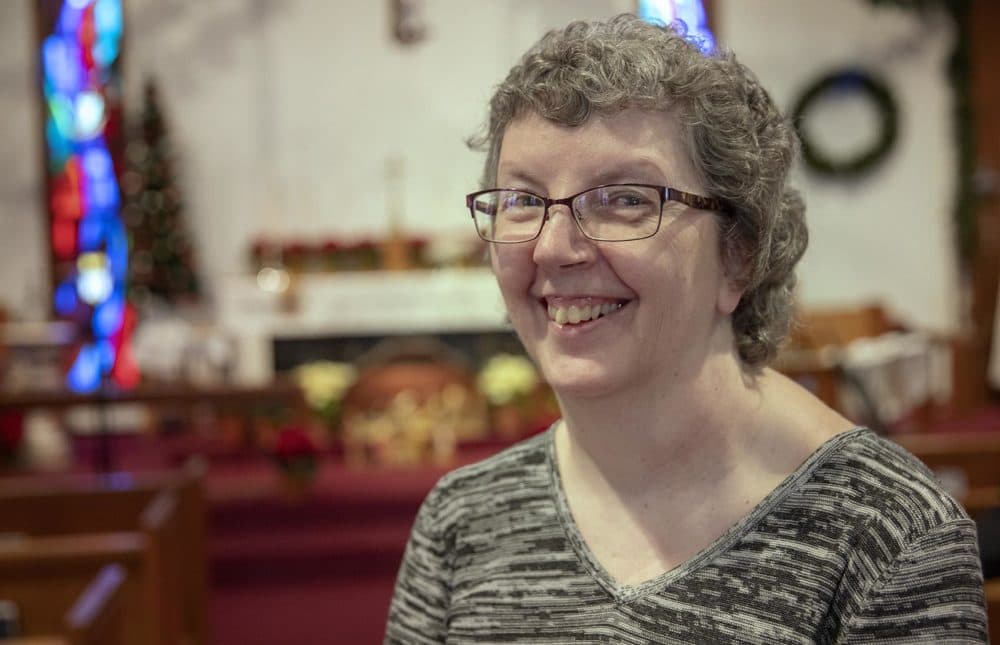
"I love the forest as much as the next guy, but it's a small area. It's not large," said John Kingsbury, a member of the congregation for over 30 years. He said going solar on the lot will save more carbon and make more money for the church.
"Hopefully it would sustain the future of this place, and the environmental value of it also. So it would be a definite plus for the parish here," Kingsbury said.
There are alternatives to cutting down the forest. The church has plenty of sunny space on its expansive roof for solar panels. It could also erect a canopy over the parking lot and mount an array on top of that structure.
The decision to save the forest or go solar is on hold for the time being. The Massachusetts solar incentive SMART program has been so successful in getting companies and organizations to install large scale solar arrays that it has reached its mandated limit.
While the state re-evaluates the program, the members of Trinity Episcopal pray for guidance, and consider their solar energy options.
This article was originally published on February 06, 2020.
This segment aired on February 6, 2020.
